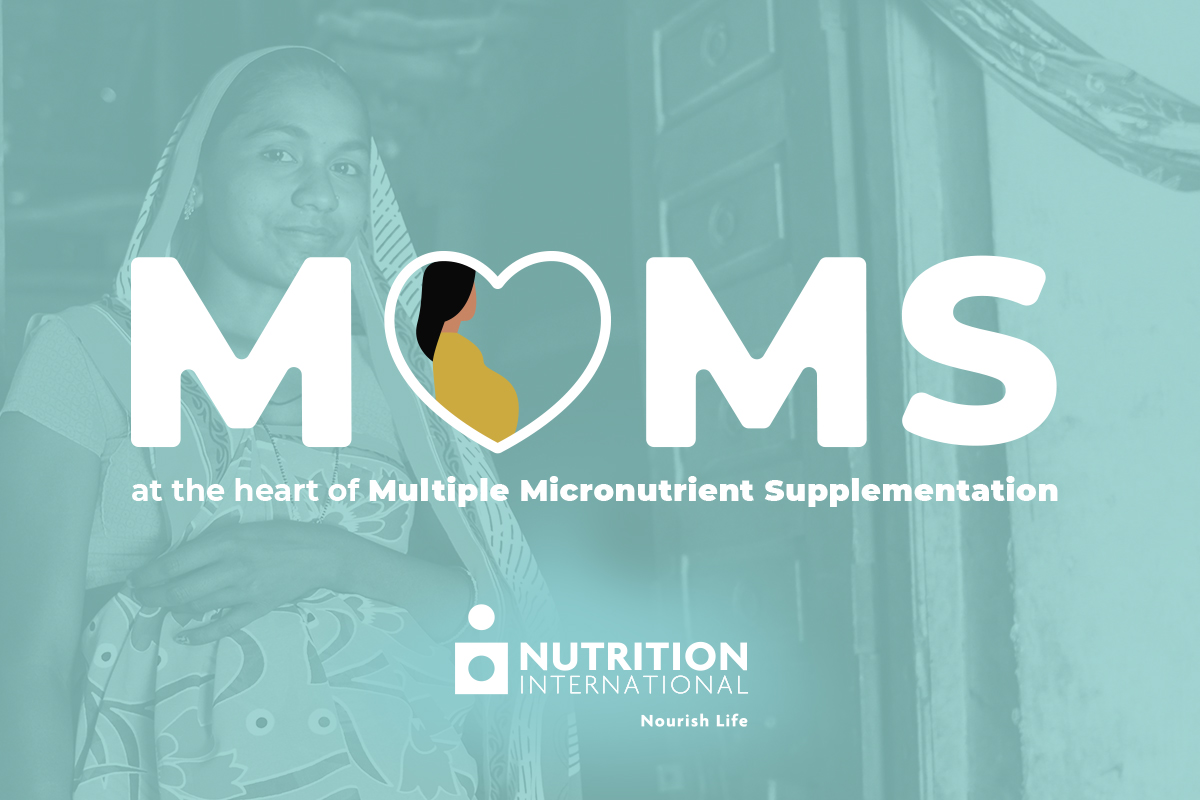Field Story
Ten must see global nutrition stories from 2023
December 18, 2023
Nutrition International launches forward-looking tool for governments to calculate cost-effectiveness of prenatal multiple micronutrient supplementation
A new online tool will help governments determine the health benefits and budget impact of transitioning from iron and folic acid supplementation (IFAS) to multiple micronutrient supplementation (MMS) in their maternal health programs.
Posted on October 10, 2019

October 10, OTTAWA – A new online tool will help governments determine the health benefits and budget impact of transitioning from iron and folic acid supplementation (IFAS) to multiple micronutrient supplementation (MMS) in their maternal health programs. The Nutrition International MMS Cost-Benefit Tool, developed in partnership with Limestone Analytics, will help countries determine whether antenatal MMS is better value for money than IFAS.
Since 1968, IFAS has been recommended during pregnancy in low and middle income countries to reduce the risk of low birthweight, maternal anaemia, preterm birth and other complications. Emerging global evidence now suggests that MMS – a daily dose of 15 vitamins and minerals – leads to additional improved birth outcomes, including reduced risks of stillbirths and low birthweight, and supports improved overall health and nutritional status of women. In addition, MMS is very cost-effective, with an unprecedented return on investment.
“The transition and scale-up of MMS is an opportunity not only to accelerate progress towards the World Health Assembly Nutrition 2025 targets,” said Jennifer Busch-Hallen, Senior Technical Advisor, Maternal and Neonatal Health and Nutrition, Nutrition International, “but also to prioritize women’s nutrition and empowerment as part of national nutrition and health programs, and strengthen maternal nutrition globally.”
While the World Health Organization has recommended the use of MMS in populations where nutritional deficiencies are prevalent, there has been no global guidance on universal adoption. But given the new evidence available, many countries are beginning to explore the feasibility and value-for-money of transitioning from IFAS to MMS.
To provide governments with the information they need to build an investment case for MMS, Nutrition International and Limestone Analytics developed a model for calculating the cost-effectiveness of transitioning from IFA to MMS, initially applying the data to three countries with a high burden of malnutrition in Southeast Asia. This model was used to develop the Nutrition International MMS Cost-Benefit Tool, an easy to use, online, knowledge translation tool that analyzes the value for money of transitioning to MMS and helps decision-makers answer the policy question: “is antenatal MMS better value for money than IFAS?” The tool now has analyses for 12 countries in Africa and Asia, and also allows countries to put in their own data for a customized report.
“Prioritizing maternal nutrition is critical if we are going to deliver on the Sustainable Development Goals and the World Health Assembly Nutrition Targets,” said Ms. Busch-Hallen. “This tool will support governments in making informed policy decisions on the introduction of MMS, leading to more efficient use of resources, improvements in birth outcomes and better overall health, survival and equality for women.”
The tool is available for free on the Nutrition International website. For more information about the MMS Cost-Benefit Tool, please contact MoMs@NutritionIntl.org